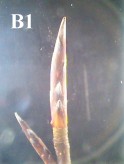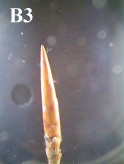

One Bud, One Body
An hypothesis has underlain much of the work with buds and planets.
It posits that the form of each species of bud ‘acknowledges’ the geocentric alignments of the Moon with a specific body in the Solar System, by changing form slightly during or near these alignments (see L. Edwards, “The Vortex of Life”, 2nd edition, Chapter 15, page 223). Oak has been found to associate with Mars, for instance, and Beech with Saturn, both with what a statistician would term, ‘statistical significance’.
For brevity, if not perfect accuracy, let us call this the “One Bud, One Body” (OBOB) hypothesis.
The OBOB hypothesis is provisional, as are all, and needs to be tested, as do all. Testing would be greatly aided by a theory. It would indicate for what we should test. Much effort is currently being expended on developing one. As it is, we are left with phenomenology (strictly, with sets of measurements of selected phenomena), with empiricism and with keeping an eye on how the data goes, in the (perhaps pious) hope of insight.
 |
Recently, however, when reviewing some work done some eleven years ago, over the late autumn, winter and early spring of 1998/1999, on two Beech buds growing on a hedge-still flourishing today-at 57.088° N, 2.149° W, on the outskirts of Aberdeen in Scotland, I found some evidence that things are not as simple as the OBOB hypothesis suggests—or, more accurately, that they were not as simple at that time. |  |